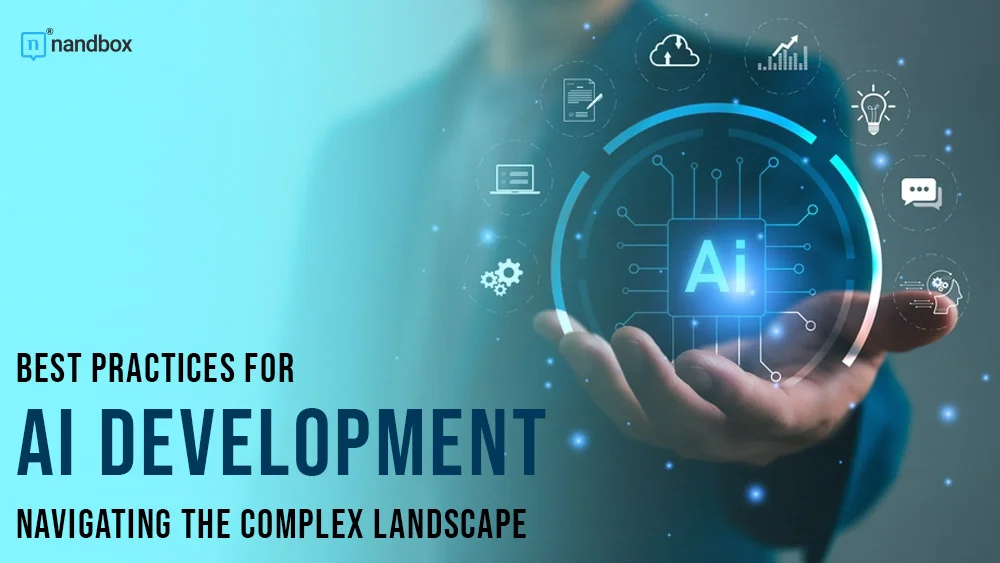Artificial Intelligence (AI) has emerged as a transformative force, reshaping industries and redefining the boundaries of technological innovation. As we stand on the cusp of this technological revolution, the development of AI systems demands a nuanced approach and adherence to best practices. In this comprehensive exploration, we will delve into the development best practices in AI industry, providing an in-depth guide for developers to navigate the complex landscape.
Introduction
Unleashing the Power of AI
Artificial Intelligence, with its potential to augment human capabilities, has become a driving force behind advancements in various domains. From healthcare and finance to manufacturing and entertainment, the influence of AI is pervasive. However, harnessing this power requires a strategic and ethical approach to development.
Understanding the AI Landscape
Artificial intelligence (AI) has transformed the world in countless ways, permeating nearly every aspect of our lives, from how we work and communicate to how we make decisions and interact with technology. The AI landscape is constantly evolving, with new advancements emerging at an unprecedented pace. To effectively navigate this rapidly changing landscape, it’s crucial to have a comprehensive understanding of the key concepts, techniques, and applications.
1. Define Clear Objectives and Scope
Setting the Foundation
Embarking on an artificial intelligence development services journey in every development company requires a solid foundation. This begins with the definition of clear objectives and a well-defined scope. Developers must engage stakeholders to understand the problem at hand, ensuring alignment between the goals of the artificial intelligence solution and the overarching organizational objectives.
By delineating the scope, developers can avoid the common pitfall of scope creep, ensuring that the project remains focused and achievable. A clearly defined scope also facilitates effective communication among team members and stakeholders, laying the groundwork for a successful project.
2. Data Quality and Preprocessing
The Fuel of AI
High-quality data is the bedrock upon which AI systems thrive. The adage “garbage in, garbage out” holds in the realm of AI development. To ensure the efficacy of artificial intelligence models, developers must prioritize data quality and employ robust preprocessing techniques.
Data Quality Checks:
- Regularly audit and clean datasets to remove inconsistencies.
- Address bias and ensure diverse representation within the data.
Feature Engineering:
- Extract relevant features to enhance model performance.
- Leverage domain knowledge to create meaningful input features.
Data preprocessing is not a one-time task; it is an iterative process that evolves as the project progresses. Continuous monitoring of data quality is essential to identify and rectify issues promptly.
- Model Selection and Architecture
Building the Brain
Choosing the right model architecture is akin to building the brain of an AI system in every machine learning application development firm. Developers must navigate through various algorithms and architectures, each tailored to specific use cases and requirements.
Model Selection:
- Evaluate different algorithms and architectures based on performance metrics.
- Consider trade-offs between model complexity and interpretability.
Interpretability:
- Opt for models with explainability features for transparency.
- Implement post-hoc interpretability techniques to understand model decisions.
Ensuring that artificial intelligence models are not black boxes is critical, especially in applications where decisions impact individuals’ lives. Model interpretability fosters trust and aids in identifying and rectifying potential biases.
4. Ethical Considerations
The Moral Compass
The ethical implications of AI development cannot be overstated. Developers are entrusted with the responsibility of creating systems that not only perform well but also adhere to ethical standards.
Bias Mitigation:
- Regularly audit models for biases and rectify discrepancies.
- Implement fairness-aware algorithms to reduce bias in decision-making.
Privacy Preservation:
- Anonymize sensitive data to protect user privacy.
- Incorporate privacy-preserving techniques such as federated learning.
By addressing biases and preserving privacy, developers contribute to the creation of ethical AI systems that respect individual rights and promote inclusivity.
5. Continuous Monitoring and Improvement
The Journey Doesn’t End
The development of AI models is an ongoing journey rather than a destination. Continuous monitoring and improvement processes are essential to adapt to changing conditions and maintain the relevance of solutions.
Monitoring Metrics:
- Regularly assess model performance against predefined metrics.
- Implement automated monitoring to detect anomalies in real time.
Feedback Loops:
- Establish feedback mechanisms to collect user input and improve models.
- Iteratively update models based on evolving requirements and user feedback.
In the dynamic landscape of AI, where data distributions shift and user expectations evolve, continuous monitoring ensures that artificial intelligence models remain effective and aligned with the organization’s goals.
Conclusion
In conclusion, the development of AI systems demands a holistic approach that encompasses clear goal-setting, robust data practices, thoughtful model selection, ethical considerations, and a commitment to continuous improvement. By adhering to these best practices, developers can navigate the complexities of AI development with confidence, creating systems that are not only powerful but also ethical and reliable.
Frequently Asked Questions
1. How important is data quality in development best practices in AI industry?
Data quality is paramount in AI development as it directly influences the performance and reliability of models. High-quality, representative data ensures that AI systems make accurate and fair predictions.
2. Why is model interpretability crucial?
Model interpretability is crucial for understanding how AI systems make decisions. In certain industries, such as healthcare and finance, interpretability is essential for building trust and ensuring accountability.
3. How can developers address biases in AI models?
Developers can address biases by regularly auditing models, diversifying training data, and implementing fairness-aware algorithms. Continuous monitoring and adjustments are key to mitigating biases in AI systems.
4. What ethical considerations should be taken into account in development best practices in AI industry?
Ethical considerations in AI development include mitigating biases, preserving user privacy, and ensuring fairness. Developers should prioritize transparency and accountability in their decision-making processes.
5. Why is continuous monitoring and improvement important for AI models?
AI models can degrade over time due to changing data patterns or evolving user needs. Continuous monitoring allows developers to detect issues promptly, while iterative improvements ensure that models stay relevant and effective in dynamic environments.







